Can Green Energy Solutions Meet Our Growing Energy Demand?
The world is currently facing an unprecedented challenge: the demand for energy is skyrocketing while the detrimental effects of fossil fuels are becoming increasingly evident. As we grapple with climate change and environmental degradation, the question arises: can green energy solutions truly meet our growing energy needs? This is not just a rhetorical question; it’s a pressing concern that requires our immediate attention. With advancements in technology and a shift in public consciousness towards sustainability, the potential for renewable energy sources to bridge the gap between demand and supply is more promising than ever.
Imagine a world where clean energy is the norm rather than the exception. A world where the sun’s rays and the wind’s whispers power our homes, schools, and industries. This vision is not far-fetched; it is within our reach. Green energy solutions, encompassing a variety of technologies, have the capacity to not only meet our energy demands but also to transform our energy landscape. However, achieving this vision requires overcoming significant challenges and embracing innovative strategies.
To understand the potential of green energy, we need to look at the various technologies available today. From solar panels that capture sunlight to wind turbines that harness the power of gusty breezes, the options are diverse and scalable. These technologies are not just theoretical; they are being implemented globally, providing real solutions to real problems. For instance, countries like Germany and Denmark have made remarkable strides in integrating renewable energy into their grids, showcasing that a sustainable future is indeed possible.
However, the journey towards a green energy future is not without its hurdles. One of the primary challenges is the intermittent nature of renewable energy sources. The sun doesn’t always shine, and the wind doesn’t always blow. This variability can lead to energy supply issues, especially during peak demand times. Therefore, developing effective energy storage solutions is crucial. Technologies such as batteries and pumped hydro storage are being explored to ensure that excess energy generated during peak production times can be stored and used when demand is high.
Moreover, we must consider the role of policy and regulations in facilitating the transition to green energy. Governments play a pivotal role in creating an environment that encourages investment in renewable technologies. This involves establishing incentives for businesses and consumers to adopt green energy solutions, as well as implementing regulations that support sustainable practices. Without supportive policies, the transition may be slow and fraught with obstacles.
In conclusion, while there are challenges to overcome, the potential for green energy solutions to meet our growing energy demand is significant. With continued innovation, investment, and supportive policies, we can pave the way for a sustainable energy future. The question is not whether we can meet our energy needs with green solutions, but rather how quickly we can make this transition.
- What are the main types of green energy? The main types include solar, wind, hydroelectric, geothermal, and biomass energy.
- How does solar energy work? Solar energy works by converting sunlight into electricity using photovoltaic cells or concentrating solar power systems.
- What are the challenges of wind energy? Challenges include variability in wind speeds, noise concerns, and impacts on wildlife.
- Can green energy sources provide enough energy for large cities? Yes, with advancements in technology and energy storage, green energy can meet the demands of large urban areas.
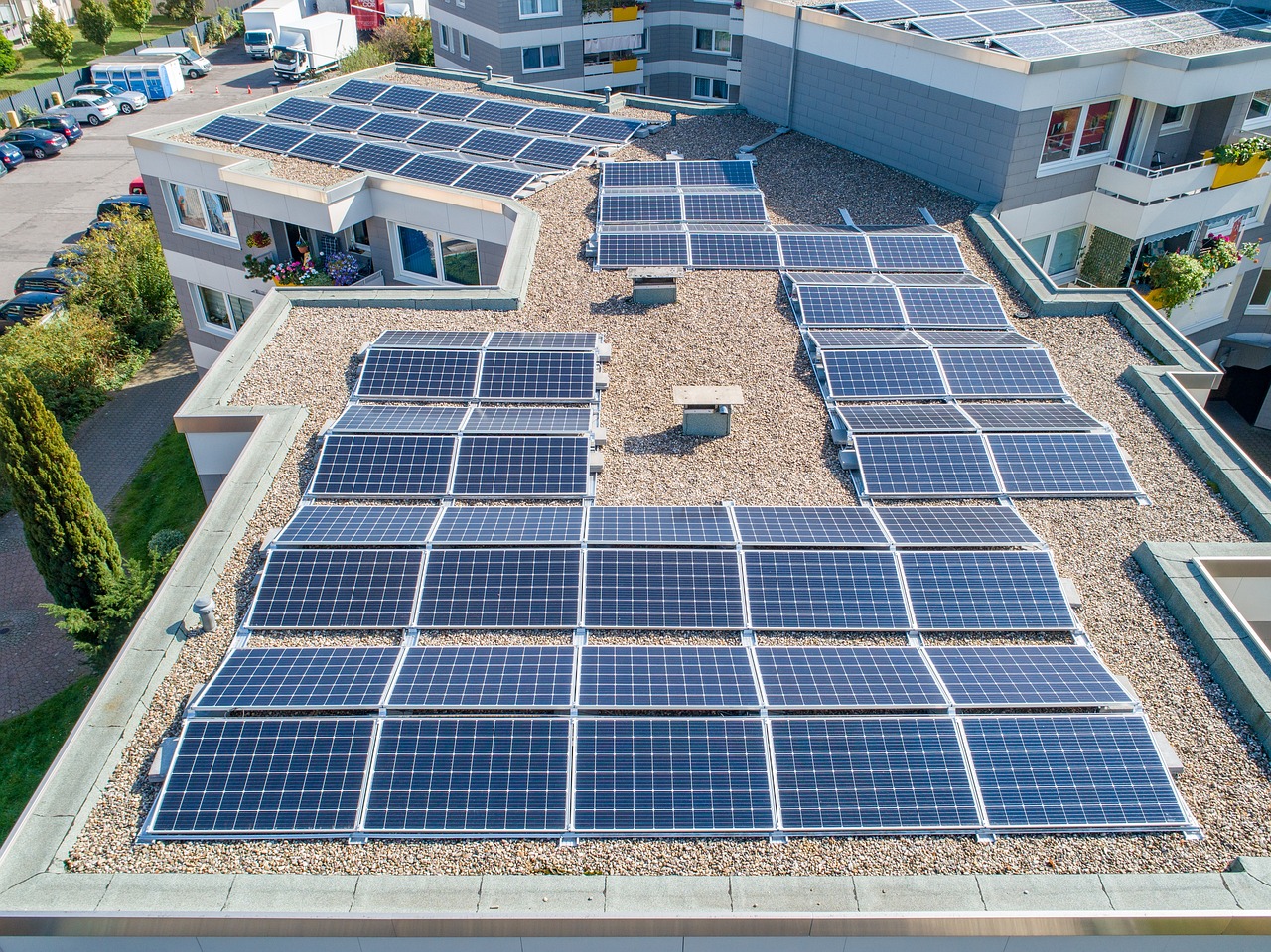
The Importance of Green Energy
Understanding the significance of green energy is crucial in today's world. As we face the realities of climate change, dwindling fossil fuel reserves, and increasing energy demands, the shift towards sustainable energy solutions has never been more vital. Green energy not only helps in reducing carbon emissions but also promotes sustainability, creating a cleaner and healthier environment for future generations.
One of the key benefits of green energy is its ability to provide a viable alternative to fossil fuels. Traditional energy sources, such as coal and oil, are limited and contribute significantly to air pollution and greenhouse gas emissions. In contrast, renewable energy sources like solar, wind, and hydroelectric power harness natural processes, which means they can be replenished continuously. This transition is not just about energy; it's about fostering a sustainable future.
Moreover, green energy technologies are becoming increasingly efficient and cost-effective. For instance, the price of solar panels has plummeted over the past decade, making solar energy more accessible for both residential and commercial use. According to recent studies, the global solar energy market is projected to grow significantly, driven by technological advancements and supportive policies. This is a clear indication that the future is bright for renewable energy.
However, the importance of green energy goes beyond just environmental benefits. It plays a crucial role in energy security as well. By diversifying our energy sources, we can reduce dependence on imported fuels, leading to greater energy independence. This not only stabilizes energy prices but also enhances national security. Countries investing in green energy are not just contributing to a healthy planet; they are also paving the way for a robust and resilient economy.
In summary, the importance of green energy lies in its ability to:
- Reduce carbon emissions and combat climate change.
- Provide sustainable and renewable alternatives to fossil fuels.
- Enhance energy security and independence.
- Drive economic growth through new technologies and job creation.
As we continue to explore and invest in green energy solutions, we must recognize that our choices today will shape the world of tomorrow. Embracing renewable energy is not just a trend; it is a necessity for a sustainable future.

Current Green Energy Technologies
As we dive into the realm of green energy technologies, it's essential to recognize the diverse array of solutions available today. These technologies not only promise to meet our increasing energy demands but also pave the way for a sustainable future. The most prominent players in this field include solar energy, wind energy, hydroelectric power, and geothermal energy. Each of these energy sources offers unique advantages and challenges, contributing to the evolving landscape of renewable energy.
Solar energy has emerged as a frontrunner in the green energy revolution. With remarkable advancements in photovoltaic cells and solar thermal systems, solar power is becoming increasingly efficient and cost-effective. For instance, recent innovations have led to the development of high-efficiency solar panels, which can convert a larger percentage of sunlight into usable electricity. This means that homeowners and businesses can generate more energy from the same amount of sunlight, making solar installations more appealing than ever.
In addition to photovoltaic technology, concentrated solar power (CSP) systems are gaining traction. These systems utilize mirrors or lenses to focus sunlight onto a small area, generating heat that can be used to produce electricity. CSP technology is particularly beneficial for large-scale energy production, as it can provide a consistent and reliable energy supply while minimizing environmental impact. The integration of thermal energy storage systems allows CSP plants to continue generating electricity even when the sun isn't shining, addressing one of the key challenges of renewable energy.
Moving on to wind energy, this sector is witnessing rapid growth thanks to advancements in turbine technology and the expansion of offshore wind farms. Wind energy is a clean and abundant resource, capable of producing vast amounts of electricity without emitting harmful greenhouse gases. The latest turbine designs are not only more efficient but also quieter and less visually intrusive, making them more acceptable to communities. Offshore wind farms, in particular, have the potential to harness stronger and more consistent winds, leading to higher energy output.
Hydroelectric power remains one of the oldest and most reliable forms of renewable energy. By harnessing the energy of flowing water, hydroelectric plants can generate significant amounts of electricity. However, the environmental impact of large dams can be a concern, prompting the development of run-of-the-river systems that minimize disruption to local ecosystems. These systems allow for energy generation without the need for large reservoirs, striking a balance between energy production and environmental preservation.
Lastly, we cannot overlook the potential of geothermal energy. This technology taps into the Earth's internal heat, providing a constant and reliable energy source. Geothermal plants can produce electricity with a minimal carbon footprint, making them an attractive option for regions with suitable geological conditions. The challenge lies in the initial investment and the need for appropriate site selection, but as technology advances, we may see an increase in geothermal energy utilization across the globe.
In summary, the current landscape of green energy technologies is diverse and dynamic. Each technology brings its own set of advantages and challenges, but together, they hold the potential to transform our energy systems and meet the growing demand for sustainable energy solutions. The future of our planet depends on embracing these innovations and investing in a cleaner, greener tomorrow.
- What are the main types of green energy technologies? The primary types include solar, wind, hydroelectric, and geothermal energy.
- How does solar energy work? Solar energy systems convert sunlight into electricity using photovoltaic cells or generate heat for power through solar thermal systems.
- What are the benefits of wind energy? Wind energy is renewable, reduces greenhouse gas emissions, and can be generated on both land and in offshore locations.
- Is geothermal energy sustainable? Yes, geothermal energy is sustainable and has a low environmental impact, making it a reliable energy source.

Solar Energy Innovations
In recent years, the world has witnessed a surge in that are transforming the way we harness the sun's power. With the increasing demand for clean energy, solar technology has evolved remarkably, making it one of the frontrunners in the renewable energy race. Imagine a world where rooftops are adorned with sleek solar panels, turning every home into a mini power plant. This vision is becoming a reality thanks to advancements in photovoltaic cells and solar thermal systems.
One of the most exciting developments in solar energy is the enhancement of photovoltaic (PV) cell technology. Recent breakthroughs have led to the creation of cells that not only capture more sunlight but also convert it into electricity with greater efficiency. For instance, traditional silicon-based cells have been outpaced by new materials such as perovskite cells, which promise to boost efficiency rates significantly while reducing production costs. This means that solar energy is becoming more accessible to both residential and commercial users, allowing more people to tap into this abundant resource.
Moreover, the concept of Concentrated Solar Power (CSP) is gaining traction. CSP systems use mirrors or lenses to concentrate sunlight onto a small area, generating high temperatures that can produce steam to drive turbines. This method not only offers a reliable source of energy but also allows for large-scale energy production. The beauty of CSP lies in its ability to store energy in the form of heat, making it possible to generate electricity even when the sun isn't shining. This feature is crucial for meeting energy demands during peak hours or cloudy days.
To give you a clearer picture of how these technologies are shaping the future, consider the following table that highlights some key innovations:
| Innovation | Description | Benefits |
|---|---|---|
| Photovoltaic Cells | Advanced solar cells that convert sunlight into electricity. | Higher efficiency, lower costs, and wider accessibility. |
| Concentrated Solar Power | Systems that use mirrors to focus sunlight for energy generation. | Energy storage capability and large-scale production. |
| Building-Integrated Photovoltaics (BIPV) | Solar panels integrated into building materials. | Dual purpose as energy generators and architectural elements. |
As we delve deeper into the realm of solar energy, it's clear that the innovations emerging in this field are not just about technology; they represent a shift in our approach to energy consumption. With every new development, we inch closer to a sustainable future where clean energy is not just a dream but a reality. So, what does this mean for you? The potential for reduced energy bills, a smaller carbon footprint, and a more resilient energy grid are just a few of the benefits that solar energy innovations bring to the table.
In conclusion, the innovations in solar energy are not only exciting but also essential for meeting our growing energy demands sustainably. As we continue to explore and invest in these technologies, we pave the way for a greener, more sustainable future where the sun powers our lives.
- What are photovoltaic cells? Photovoltaic cells are devices that convert sunlight directly into electricity using the photovoltaic effect.
- How does Concentrated Solar Power work? CSP systems use mirrors or lenses to focus a large area of sunlight onto a small area, generating heat that can be used to produce electricity.
- What are the benefits of solar energy? Solar energy reduces reliance on fossil fuels, lowers energy bills, and decreases greenhouse gas emissions.
- Can solar energy be stored for use at night? Yes, technologies like battery storage and Concentrated Solar Power can store energy for later use.
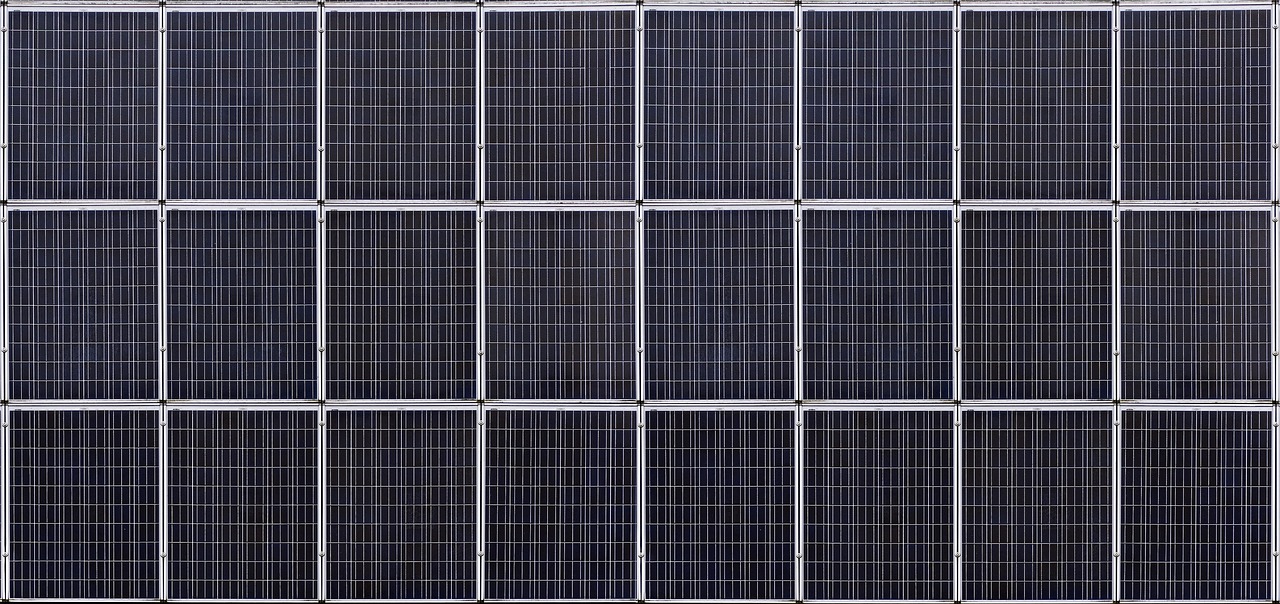
Photovoltaic Cell Developments
The world of photovoltaic (PV) cells has undergone a remarkable transformation in recent years, making solar energy more viable and attractive than ever before. With the relentless pursuit of efficiency and cost-effectiveness, researchers and engineers have made significant strides in enhancing the performance of solar panels. But what exactly has changed, and why should we care? Let’s delve into some of the most exciting developments in photovoltaic technology that are paving the way for a greener future.
One of the most groundbreaking innovations has been the improvement in solar cell efficiency. Traditional silicon-based solar cells typically convert around 15-20% of sunlight into electricity. However, recent advances have pushed this figure to over 25% for commercial products, thanks to the introduction of new materials and technologies. For instance, the emergence of perovskite solar cells has shown potential efficiencies exceeding 30% in laboratory settings. These cells are not only efficient but also cheaper to produce, making them a game-changer for the industry.
Moreover, the manufacturing processes for photovoltaic cells have become more streamlined. With the advent of automated production lines and advanced materials, the cost of solar panels has plummeted. For instance, the average price of solar photovoltaic systems has dropped by about 80% since 2010. This remarkable decrease has made solar energy accessible to a broader audience, from homeowners to large-scale solar farms. As a result, more people are making the switch to renewable energy, reducing their carbon footprint and contributing to a sustainable future.
Another exciting development is the integration of smart technology into solar energy systems. Modern photovoltaic systems can now be equipped with smart inverters and monitoring systems that optimize energy production and consumption. These technologies allow users to track their energy usage in real-time, making it easier to manage energy consumption effectively. Additionally, they can help in identifying maintenance needs before they become significant issues, ensuring that the solar panels operate at peak efficiency.
To give you a clearer picture of how these advancements are shaping the future of solar energy, take a look at the following table that summarizes key developments:
| Development | Description | Impact |
|---|---|---|
| Increased Efficiency | Improvements in solar cell efficiency, particularly with perovskite cells. | Higher energy output per panel, making solar more viable. |
| Cost Reduction | Significant drop in manufacturing costs due to automation and material advancements. | Wider adoption of solar technology across various demographics. |
| Smart Technology Integration | Use of smart inverters and monitoring systems for real-time energy management. | Enhanced efficiency and user engagement in energy consumption. |
As we look to the future, the potential for photovoltaic cell developments is immense. With continuous research and innovation, we can expect even greater efficiencies, lower costs, and more sustainable practices in solar energy production. It’s not just about harnessing the sun’s power; it’s about making that power accessible and efficient for everyone. The future of energy is bright, and photovoltaic cells are at the forefront of this exciting transformation.
- What are photovoltaic cells?
Photovoltaic cells are devices that convert sunlight directly into electricity using the photovoltaic effect.
- How do advancements in PV technology affect energy costs?
Improvements in efficiency and reductions in manufacturing costs lead to lower prices for consumers and increased adoption of solar energy.
- What is the lifespan of a solar panel?
Most solar panels have a lifespan of 25-30 years, with many maintaining performance beyond that period.
- Are there any maintenance requirements for solar panels?
While solar panels require minimal maintenance, it is advisable to keep them clean and check for any shading or obstructions regularly.
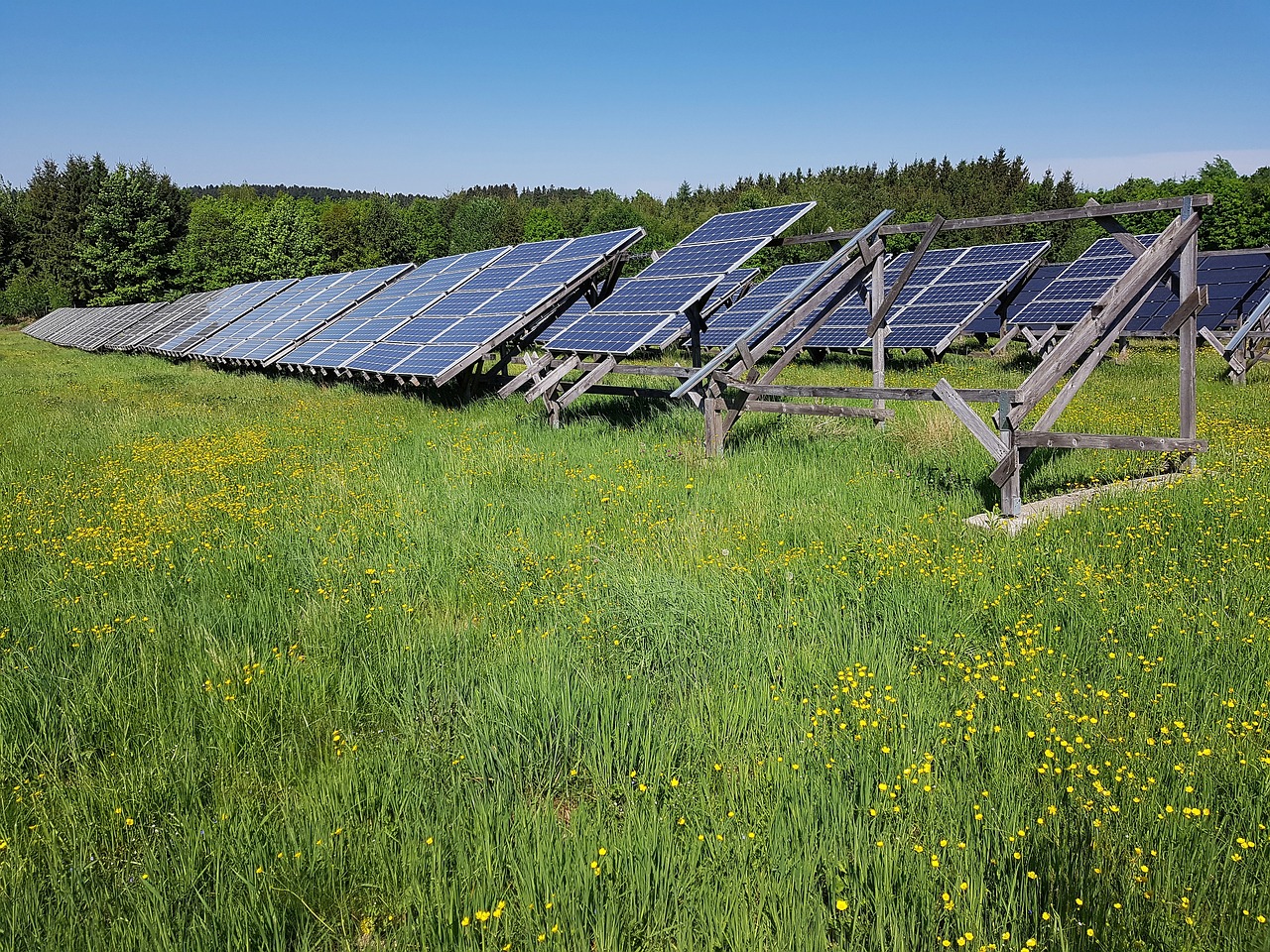
Concentrated Solar Power
Concentrated Solar Power (CSP) is an exciting and innovative technology that harnesses the sun's energy in a unique way. Unlike traditional solar panels that convert sunlight directly into electricity, CSP systems use mirrors or lenses to concentrate sunlight onto a small area, typically a receiver, which then converts the concentrated solar energy into heat. This heat can be used to produce steam that drives a turbine connected to a generator, creating electricity. It's like focusing sunlight through a magnifying glass to start a fire, but on a much larger and more efficient scale!
The beauty of CSP lies in its ability to generate power even when the sun isn't shining. By incorporating thermal energy storage systems, CSP plants can store excess heat for later use, allowing them to provide energy during cloudy days or at night. This capability makes CSP a reliable option for large-scale energy production, especially in regions with abundant sunlight. Imagine having a giant battery that charges during the day and powers your home when the sun goes down—this is precisely what CSP can achieve!
Currently, there are several types of CSP technologies, including:
- Parabolic Trough Systems: These systems use parabolic mirrors to focus sunlight onto a receiver tube running along the focal line of the trough. The fluid in the tube heats up and is used to generate steam.
- Power Towers: Power towers use a large field of mirrors, known as heliostats, to focus sunlight on a tower-mounted receiver. This approach can achieve higher temperatures and efficiencies.
- Dish Stirling Systems: These systems use a parabolic dish to concentrate sunlight onto a receiver that heats a working fluid, which then drives a Stirling engine to generate electricity.
One of the most significant advantages of CSP is its scalability. CSP plants can range from small installations suitable for local communities to massive power plants that can supply electricity to thousands of homes. This flexibility allows for a tailored approach to energy needs, making CSP a viable option for both urban and rural areas.
However, like any technology, CSP does face challenges. The initial investment can be substantial, and the technology requires a considerable amount of land, which can be a limiting factor in densely populated regions. Additionally, CSP is most effective in areas with high direct sunlight, making geographic location a crucial consideration.
Despite these challenges, the potential of Concentrated Solar Power is undeniable. With ongoing research and development aimed at improving efficiency and reducing costs, CSP could play a vital role in our transition to a more sustainable energy future. By harnessing the power of the sun in such an efficient manner, we can reduce our reliance on fossil fuels and move towards a cleaner, greener planet.
1. What is Concentrated Solar Power (CSP)?
CSP is a technology that uses mirrors or lenses to concentrate sunlight onto a receiver, converting it into heat to generate electricity.
2. How does CSP differ from traditional solar panels?
While traditional solar panels convert sunlight directly into electricity, CSP systems generate heat that is then used to produce electricity, offering the ability to store energy for later use.
3. Where are CSP systems most effective?
CSP systems are most effective in regions with high direct sunlight, such as deserts, making them ideal for areas with abundant solar resources.
4. Can CSP provide energy at night?
Yes, CSP systems can include thermal energy storage, allowing them to provide electricity even when the sun isn't shining.
5. What are the main challenges faced by CSP technology?
The main challenges include high initial costs, land requirements, and the need for sunny locations to maximize efficiency.
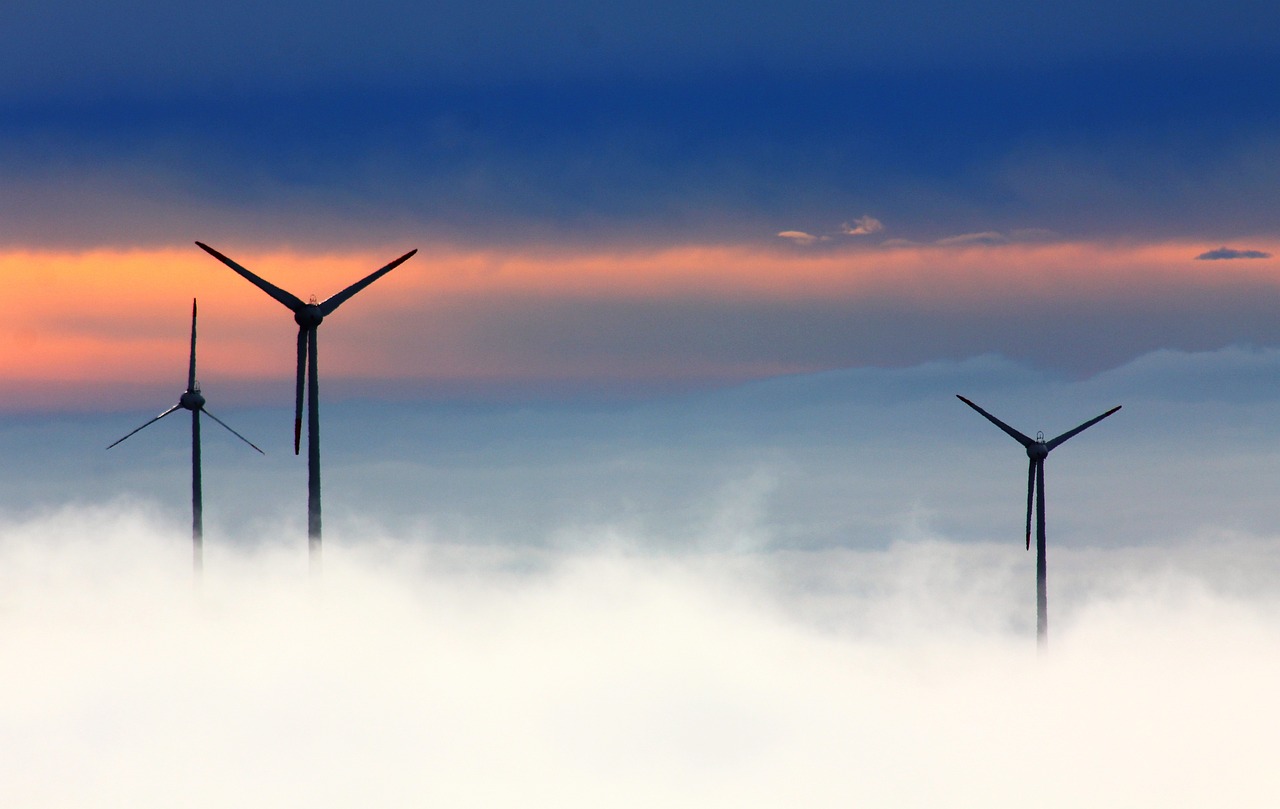
Wind Energy Potential
Wind energy is not just a buzzword; it’s a powerful force that has the potential to revolutionize how we generate electricity. As we stand on the brink of an energy transformation, the winds of change are blowing favorably for renewable energy sources. With the latest advancements in turbine technology and the expansion of offshore wind farms, wind energy is emerging as one of the most viable solutions to meet our growing energy demands. Imagine harnessing the natural power of the wind to light up cities, power industries, and even charge your electric vehicle—sounds incredible, right?
One of the most exciting aspects of wind energy is its scalability. Whether it’s a small wind turbine installed on a farm or a massive offshore wind farm generating electricity for thousands of homes, the versatility of wind energy is unmatched. In fact, according to recent statistics, wind energy accounted for approximately 8.4% of total U.S. electricity generation in 2022, and this number is only expected to grow. With each passing year, the efficiency of wind turbines is increasing, allowing us to capture more energy from the wind than ever before.
But what makes wind energy so appealing? For starters, it’s a clean and renewable source of energy that doesn’t produce harmful emissions. Unlike fossil fuels, which release carbon dioxide and other pollutants into the atmosphere, wind energy is a breath of fresh air—literally! Moreover, the cost of wind energy has plummeted over the past decade. According to the International Renewable Energy Agency (IRENA), the cost of onshore wind energy has decreased by around 49% since 2010. This trend makes it increasingly competitive with traditional energy sources.
However, wind energy isn’t without its challenges. One of the primary concerns is the intermittent nature of wind itself. Wind doesn’t blow consistently, which can create fluctuations in energy supply. To combat this, advancements in energy storage solutions are crucial. Technologies such as battery storage systems and pumped hydro storage are being developed to ensure that excess energy generated during windy periods can be stored and used when demand is high.
Moreover, the establishment of robust policy frameworks is essential to foster the growth of wind energy. Governments worldwide need to implement supportive policies and incentives that encourage investment in wind technology. This includes tax credits, grants, and streamlined permitting processes that can significantly lower the barriers to entry for new projects.
In summary, the potential of wind energy is vast and largely untapped. With ongoing innovations and a supportive regulatory environment, wind energy could play a pivotal role in meeting our future energy needs. As we continue to explore the possibilities, we must ask ourselves: Are we ready to embrace this wind-powered revolution?
- What is wind energy? Wind energy is the process of converting wind into electricity using wind turbines.
- How does wind energy impact the environment? Wind energy is a clean and renewable source that produces no harmful emissions, making it environmentally friendly.
- What are the challenges of wind energy? Some challenges include its intermittent nature, potential impacts on wildlife, and the need for effective energy storage solutions.
- How much of the world's energy comes from wind? As of 2022, wind energy accounted for approximately 8.4% of total U.S. electricity generation and is growing globally.
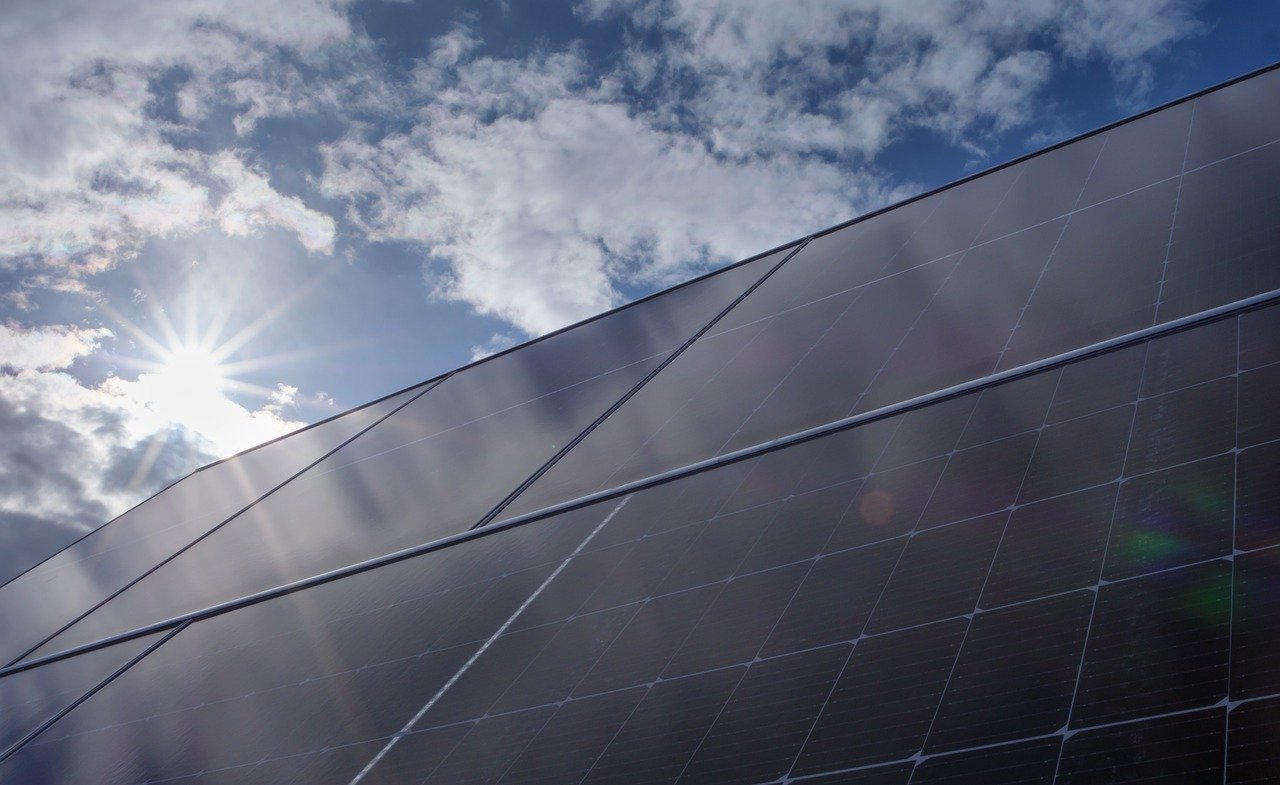
Challenges in Green Energy Adoption
Transitioning to green energy is not as simple as flipping a switch. While the advantages of renewable energy sources are clear, several challenges stand in the way of widespread adoption. One of the most significant hurdles is the high initial costs associated with implementing green technologies. For many businesses and homeowners, the upfront investment for solar panels, wind turbines, or geothermal systems can be daunting. Even though these technologies save money in the long run, the initial financial barrier often deters potential adopters.
Another critical challenge is energy storage. Renewable energy sources like solar and wind are intermittent by nature. The sun doesn’t always shine, and the wind doesn’t always blow. This inconsistency raises questions about how to store energy for use during periods of low production. Effective energy storage solutions, such as advanced batteries and pumped hydroelectric systems, are essential for ensuring a stable energy supply. Without them, the reliability of green energy systems can come into question, making consumers hesitant to switch.
Furthermore, the policy and regulatory frameworks surrounding green energy can be complex and sometimes unfriendly. In many regions, outdated regulations favor fossil fuels, creating an uneven playing field. For green energy to thrive, robust policies need to be established. These policies should not only provide incentives for renewable energy investments but also create a regulatory environment that encourages innovation and growth in the sector. Without supportive legislation, the transition to green energy may stall, leaving potential advancements in limbo.
Lastly, there’s the issue of public perception. Many people still have misconceptions about green energy technologies. For instance, some believe that solar panels are only effective in sunny regions or that wind turbines are noisy and unsightly. Addressing these misconceptions through education and outreach is vital. When the public understands the benefits and feasibility of green energy, they are more likely to support its adoption.
In summary, while the transition to green energy is a step in the right direction for our planet, it is not without its challenges. High initial costs, energy storage issues, regulatory hurdles, and public perception all play significant roles in shaping the future of renewable energy. However, with ongoing innovations and a collective effort to overcome these obstacles, the dream of a sustainable energy future can become a reality.
- What are the main challenges in adopting green energy?
The main challenges include high initial costs, energy storage issues, regulatory hurdles, and public perception. - How can energy storage solutions help?
Energy storage solutions, such as batteries, help manage the intermittency of renewable energy sources, ensuring a stable energy supply. - Why is policy important for green energy?
Robust policies provide incentives for investment and create a favorable regulatory environment that encourages the growth of renewable technologies. - How can public perception be changed?
Education and outreach can help dispel myths and increase understanding of the benefits and feasibility of green energy technologies.
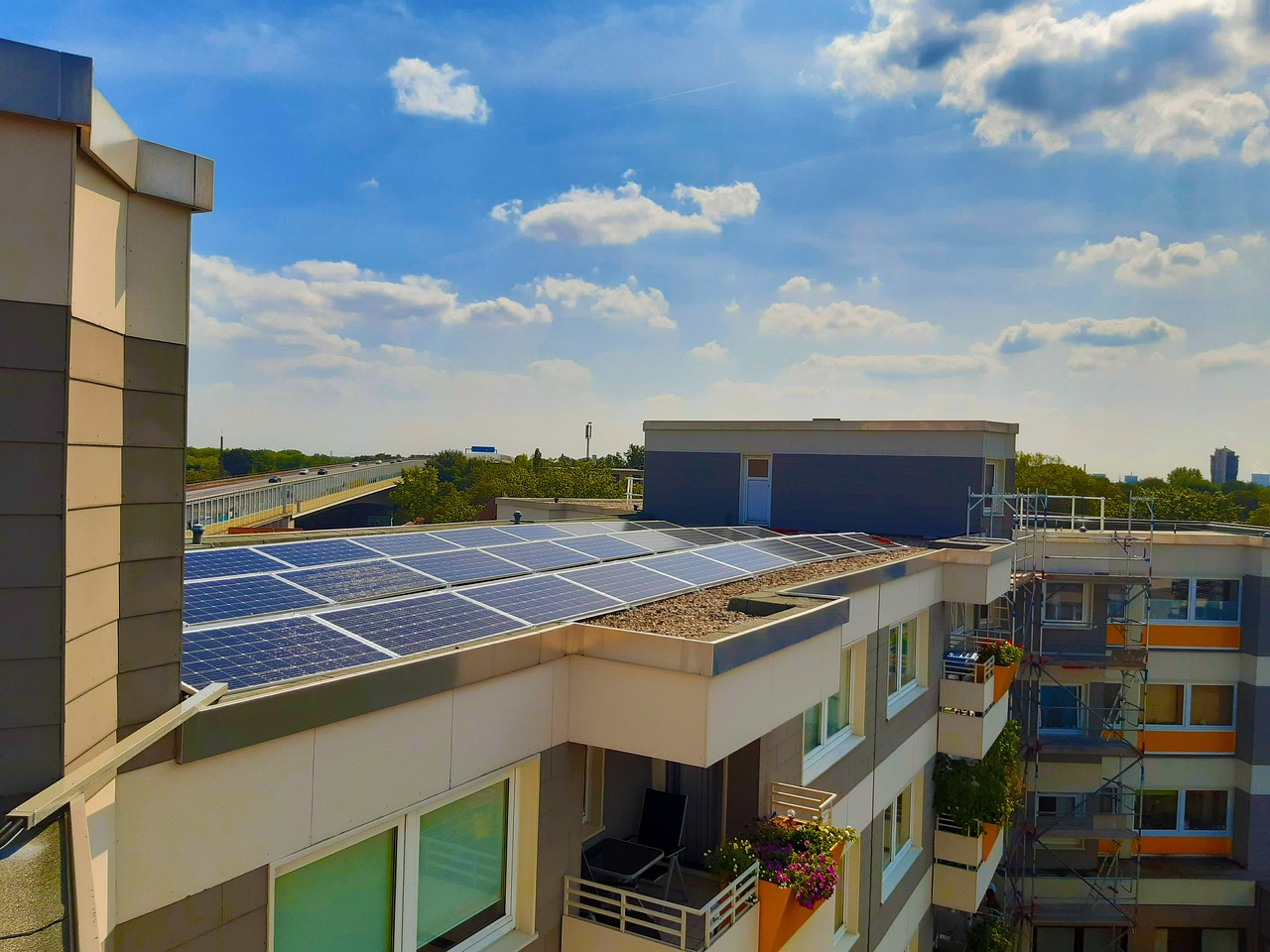
Energy Storage Solutions
When we talk about green energy, we often think of solar panels soaking up the sun or wind turbines spinning gracefully in the breeze. But what happens when the sun sets, or the wind dies down? This is where come into play. These technologies are essential for managing the intermittent nature of renewable energy sources, ensuring that we have a reliable and stable energy supply even when production dips.
Imagine a world where you can harness the power of the sun during the day and use that energy to light your home at night. Sounds fantastic, right? Well, that’s exactly what energy storage solutions aim to achieve. By capturing excess energy produced during peak times, we can store it for later use, effectively smoothing out the fluctuations in energy supply and demand.
There are several types of energy storage solutions available today, each with its own unique advantages and challenges. Here are a few of the most prominent:
- Batteries: Lithium-ion batteries are the most common form of energy storage, powering everything from smartphones to electric vehicles. In the context of renewable energy, they can store surplus energy generated by solar panels or wind turbines, making it available when needed.
- Pumped Hydro Storage: This method uses excess energy to pump water uphill to a reservoir. When energy is needed, the stored water is released, flowing back down through turbines to generate electricity. It's like a giant battery, but on a much larger scale.
- Flywheels: These devices store energy in the form of kinetic energy. When excess energy is available, it spins a rotor to store that energy. When needed, the rotor's motion is converted back into electricity. Flywheels are known for their rapid response times, making them ideal for stabilizing the grid.
Each of these technologies plays a crucial role in creating a more resilient energy system. However, they are not without their challenges. For instance, batteries, while versatile, can be expensive and have environmental concerns related to their production and disposal. Pumped hydro storage requires specific geographical conditions, and flywheels, though efficient, are still relatively niche in the market.
As we look towards the future, the development of advanced energy storage technologies is crucial. Innovations such as solid-state batteries and thermal energy storage systems are on the horizon, promising to enhance efficiency and reduce costs. Moreover, integrating these storage solutions with smart grid technology can optimize energy distribution and usage, making our energy systems more intelligent and responsive.
In conclusion, energy storage solutions are not just an add-on to the renewable energy landscape; they are a vital component that will enable us to fully harness the power of green energy. By investing in and developing these technologies, we can ensure a stable, reliable, and sustainable energy future that meets the demands of our growing population.
Q: Why is energy storage important for renewable energy?
A: Energy storage is crucial because it allows us to store excess energy generated from renewable sources like solar and wind for use during periods of low production. This helps to balance supply and demand, ensuring a reliable energy supply.
Q: What are the most common types of energy storage solutions?
A: The most common energy storage solutions include batteries (especially lithium-ion), pumped hydro storage, and flywheels. Each has its own strengths and weaknesses, making them suitable for different applications.
Q: Are there any environmental concerns with energy storage technologies?
A: Yes, some energy storage technologies, particularly batteries, can have environmental impacts related to mining for materials and disposal. However, ongoing research aims to develop more sustainable solutions.
Q: How does energy storage contribute to a sustainable energy future?
A: By enabling the effective use of renewable energy sources, energy storage helps reduce reliance on fossil fuels, decreases carbon emissions, and promotes a cleaner, more sustainable energy system.

Policy and Regulatory Frameworks
When it comes to the adoption of green energy, having a solid policy and regulatory framework is like having a sturdy foundation for a house. It’s essential! Governments around the world are realizing that to transition to renewable energy sources effectively, they need to create an environment that fosters innovation and investment. This means crafting policies that not only support the development of green technologies but also make them financially viable for businesses and consumers alike.
One of the primary ways that governments can encourage the adoption of green energy is through incentives and subsidies. These can come in various forms, such as tax credits for solar panel installations or grants for wind farm development. For instance, in the United States, the Investment Tax Credit (ITC) allows homeowners and businesses to deduct a significant percentage of the cost of installing solar energy systems from their federal taxes. Such incentives can significantly lower the initial financial barriers that often deter potential adopters.
Moreover, regulatory frameworks must also address the interconnection standards that allow renewable energy systems to connect to the grid. Without clear guidelines, energy producers may face unnecessary hurdles, leading to delays and increased costs. This is where streamlined permitting processes come into play. By simplifying these procedures, governments can expedite the deployment of renewable energy projects, ensuring that the energy produced can get to where it’s needed most.
In addition to these incentives, renewable energy targets play a crucial role in setting the stage for sustainable energy growth. Countries like Germany and Denmark have set ambitious goals for renewable energy adoption, which not only drive investment but also inspire other nations to follow suit. These targets can be complemented by penalties for non-compliance with environmental standards, thus holding both corporations and governments accountable for their energy choices.
However, it’s not just about creating favorable conditions; there’s also a need for public awareness and education. Governments should invest in campaigns that inform citizens about the benefits of green energy and how they can participate in the transition. When people understand the advantages—such as lower energy bills and a healthier environment—they are more likely to support and adopt these technologies.
Ultimately, the success of green energy adoption hinges on a well-rounded approach that includes financial incentives, regulatory clarity, ambitious targets, and public engagement. As we move forward, it’s crucial for policymakers to collaborate with industry stakeholders, environmental groups, and the public to create a comprehensive strategy that not only meets our current energy demands but also paves the way for a sustainable future.
- What are the main benefits of green energy? Green energy reduces carbon emissions, promotes sustainability, and provides a cleaner environment.
- How do government policies impact green energy adoption? Policies can provide financial incentives, streamline regulations, and set ambitious targets that encourage investment in renewable technologies.
- What role does public awareness play in adopting green energy? Increased public awareness can lead to greater support and participation in green energy initiatives, making the transition smoother and more effective.
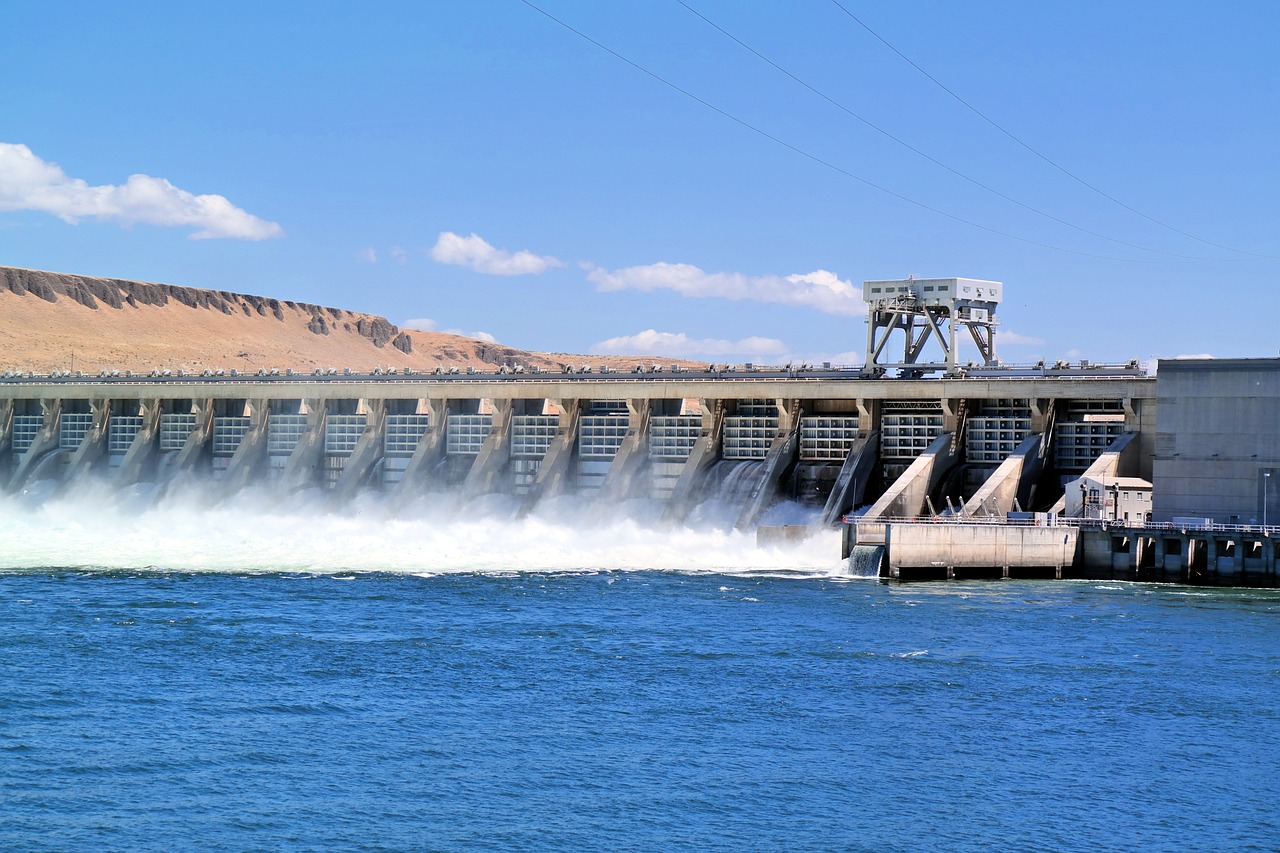
The Future of Green Energy
The future of green energy is not just a dream—it's a rapidly approaching reality. As we stand at the crossroads of innovation and sustainability, the potential for renewable energy sources to power our world is more promising than ever. With the **global energy demand** projected to rise significantly in the coming decades, the urgency to transition from fossil fuels to renewable solutions has never been clearer. Imagine a world where clean energy is the norm, not the exception. This vision is becoming more tangible thanks to ongoing technological advancements and increased investment in green energy initiatives.
One of the most exciting aspects of this transition is the **continuous innovation** happening across various green energy sectors. From solar panels that can generate electricity even on cloudy days to wind turbines that operate efficiently in low-wind conditions, the advancements are staggering. For instance, the latest **solar photovoltaic technologies** are now capable of converting sunlight into electricity with remarkable efficiency, often exceeding 20% in optimal conditions. This means more energy generated from the same amount of sunlight, making solar power an increasingly viable option for both residential and commercial applications.
Moreover, as governments and private sectors invest heavily in **research and development**, we can expect to see a surge in **energy storage solutions**. These innovations are crucial for addressing the intermittent nature of renewable energy sources. With better battery technologies, such as lithium-sulfur and solid-state batteries, we can store excess energy produced during peak times and utilize it during periods of high demand. This not only stabilizes the energy grid but also enhances the reliability of renewable sources, making them more appealing to consumers and businesses alike.
In addition to technological advancements, the role of **policy and regulation** cannot be overstated. Governments worldwide are beginning to recognize the importance of supporting green energy initiatives. Policies that provide incentives for renewable energy projects, such as tax credits and grants, are essential for encouraging investment. Furthermore, establishing **renewable energy standards** can help ensure that a significant portion of the energy supply comes from sustainable sources. This creates a win-win situation: it fosters economic growth while simultaneously addressing climate change.
As we look ahead, the collaboration between various stakeholders—governments, businesses, and communities—will be critical in shaping the future of green energy. By working together, we can create a robust infrastructure that supports renewable energy deployment, encourages innovation, and ultimately leads to a sustainable energy future. The transition to green energy is not merely an option; it is a necessity for the **health of our planet** and the well-being of future generations.
In conclusion, the future of green energy is bright and full of possibilities. With advancements in technology, supportive policies, and a collective commitment to sustainability, we can meet the growing energy demands of our world while protecting the environment. The journey may have its challenges, but the destination—a cleaner, greener planet—is worth every effort.
- What are the main types of green energy? Green energy primarily includes solar, wind, hydroelectric, geothermal, and biomass energy.
- How can individuals contribute to green energy solutions? Individuals can reduce energy consumption, invest in solar panels, and support policies that promote renewable energy.
- What challenges does green energy face? Green energy faces challenges such as high initial costs, energy storage issues, and the need for supportive policies.
- What is the role of technology in green energy? Technology plays a crucial role in improving efficiency, reducing costs, and enhancing the viability of renewable energy sources.
Frequently Asked Questions
- What is green energy?
Green energy refers to energy generated from natural sources that are renewable and sustainable, such as solar, wind, hydroelectric, and geothermal power. These energy sources have a minimal environmental impact and help reduce carbon emissions.
- How can green energy solutions meet our growing energy demand?
Green energy solutions can meet our increasing energy demand through advancements in technology, scalability, and efficiency. By harnessing renewable sources, we can create a sustainable energy supply that grows alongside our needs, ensuring a cleaner environment.
- What are the main types of green energy technologies?
The main types of green energy technologies include solar energy, wind energy, hydroelectric power, and geothermal energy. Each of these technologies has its unique benefits and applications, contributing to a diversified energy landscape.
- What are the benefits of using solar energy?
Solar energy offers numerous benefits, including reduced electricity bills, low maintenance costs, and a significant decrease in carbon footprint. Innovations in photovoltaic cells and concentrated solar power systems have made solar energy more efficient and accessible.
- What challenges does green energy face?
Despite its advantages, green energy faces challenges such as high initial investment costs, energy storage issues, and the need for supportive policies. Addressing these challenges is crucial for the widespread adoption of renewable energy technologies.
- How important is energy storage for renewable energy?
Energy storage is vital for managing the intermittent nature of renewable energy sources. Effective storage solutions ensure a stable energy supply, allowing us to harness energy when it's generated and use it when demand is high.
- What role do policies play in promoting green energy?
Robust policies and regulatory frameworks are essential for encouraging the adoption of green energy. They provide incentives for investment, establish regulations for renewable technologies, and create a supportive environment for sustainable energy growth.
- What does the future hold for green energy?
The future of green energy looks bright, with ongoing innovations and increasing investments aimed at enhancing efficiency and reducing costs. As technology advances, we can expect a significant shift towards sustainable energy solutions to meet global demands.



















